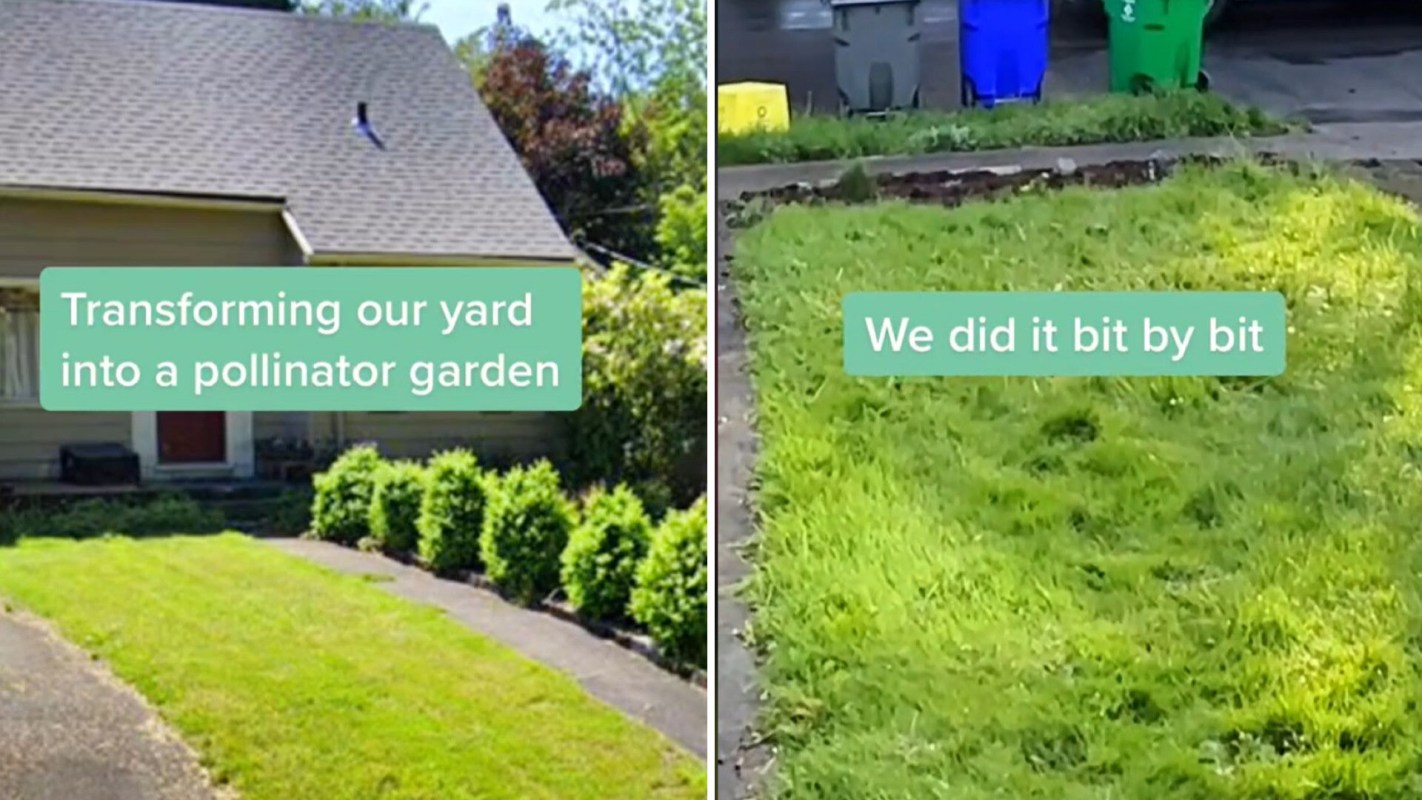A video by TikToker Sunshine (@slemowonder) shows how they transformed their typical turf lawn into a thriving and beautiful pollinator garden.
The video gives viewers a play-by-play of how the job was done, starting by digging up the grass, then adding compost layered with mulch, and finally planting native plants by hand using a shovel.
The TikToker even added a little stone path to the front sidewalk from their driveway.
@slemowonder The amount of joy this brings me 📈🔝 #pollinatorsareimportant #pollinatoryard #pollinatorgarden #nativeplanttok #nativeplants #pdx #portlandoregon #nolawns #wildflowers ♬ Sunflower, Vol. 6 - Harry Styles
Sunshine goes on to show the progress of their pollinator garden through spring and summer, finishing with a compilation of the final product of beautiful flowers and bees that have taken up residence.
The native-plant revolution isn't just a trend. It's a movement exemplified by a plethora of popular, highly active subreddits on the topic.
There are various reasons why transitioning from a traditional lawn to one filled with native plants is beneficial.
For starters, native plants require less water and maintenance as they are already adapted to the local environment, meaning no artificial fertilizers or synthetic chemical pesticides and herbicides are needed for your garden to flourish.
On top of the cost savings, native plants provide essential habitats for birds and other local wildlife, such as bees and butterflies.
TV shows like "Kill Your Lawn" on EarthX lay out a blueprint for homeowners to follow to join the native-plant revolution, whether with the help of professionals or through DIY like TikToker Sunshine. Companies like Yardzen can also walk you through every step of designing your natural lawn.
Fellow TikTokers were very enthusiastic about the original poster's transformation.
"So awesome! It's nice to see a little color other than just green," one viewer commented, with another adding "Wow this is awesome!"
"What do you do for the colder months? Are they perennials?" questioned a third curious user. "I want to do something like this but don't want to constantly replace plants."
"We focus on perennials and have been collecting seeds from everything for next spring," the original poster replied. "In the winter, we'll probably cut some stuff back so that it can grow fresh next season. But mostly we'll let plants do what they do. We chose a lot of native plants suited to the changing climate."
Join our free newsletter for easy tips to save more, waste less, and help yourself while helping the planet.









